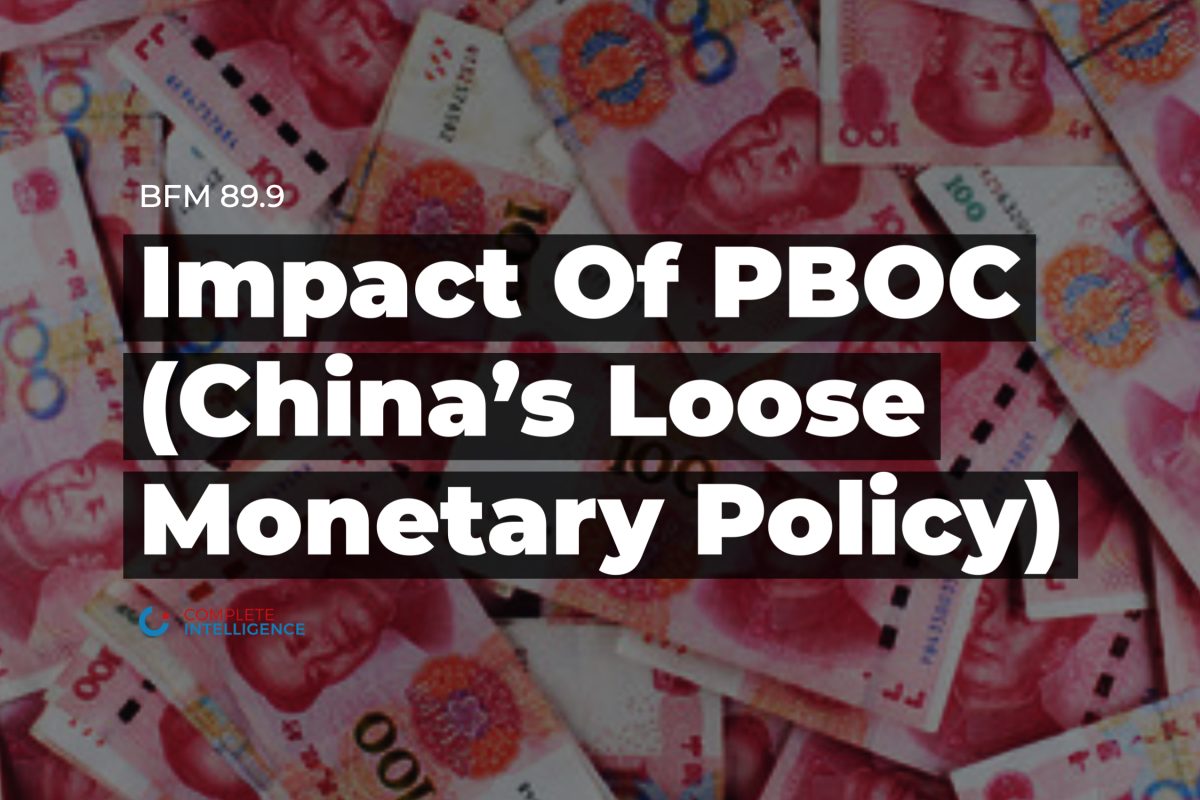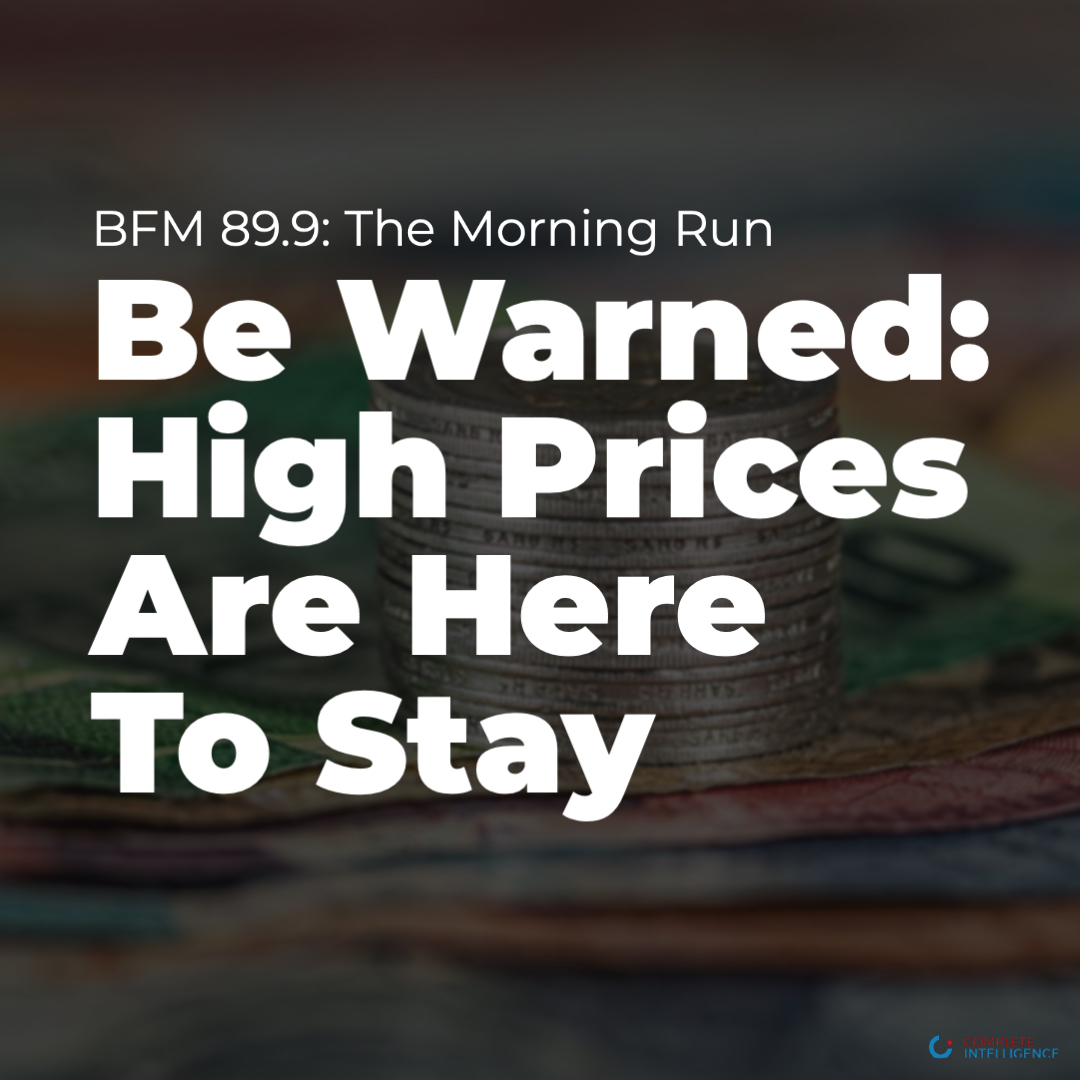This podcast is originally produced and published by BFM 89.9 and can be found at bfm.my/podcast/morning-run/market-watch/us-economic-data-equities-inflation-bond-markets
In this podcast episode, BFM 89.9 Market Watch speaks with Tony Nash, CEO of Complete Intelligence, to discuss the current state of the economy and the stock market. Nash predicts that GDP growth will be around 1% this year, which is a downgrade from previous estimates. He suggests that, due to inflation, firms have been passing on their costs to customers, but with lower volumes expected, there will be a focus on efficiency in the latter half of 2024 and into 2025. Nash also notes that there is a lot of excitement in the tech industry surrounding generative AI, which could bring about efficiencies and revenue opportunities for companies. This has resulted in a rally in tech stocks, despite the lower GDP growth estimates. However, Nash acknowledges that it’s difficult to predict how long this rally will last and whether companies’ valuations will come back down to earth eventually.
Regarding the bond market, Nash suggests that it has historically been more accurate in predicting interest rates compared to central bank prognostications. Currently, bonds are indicating that a recession is coming, but Nash believes there is only a slowdown expected, not a full-blown recession. Furthermore, he suggests that the Fed may be late to respond to this slowdown, as central banks are typically reactive organizations. Nash also discusses the recent performance of safe-haven assets such as the yen, gold, and the US dollar, and suggests that this is due to concerns over the Omicron variant and rising inflation.
Overall, Nash predicts that there will be a focus on efficiency and cautious optimism in the stock market in the coming years. He also suggests that it’s important to remain cautious and vigilant in the current economic climate, as there are a number of uncertainties and potential risks.
Transcript:
BFM
This is a podcast from BFM 89.9. The business station.
BFM
BFM 89.9. 7:06 A.m. On Thursday the 30 March. Good morning. You’re listening to the Morning Run. I’m Shazana Mokhtar with Wong Shou Ning. In half an hour, we’re going to discuss whether the worst is over for the Sri Lankan economy after it secured a 3 billion U. S. Dollar bailout last week from the IMF th. But as always, we’re going to kick start the morning with a look at how global markets closed overnight.
BFM
It was almost perfect. Almost perfect because almost every market was upset one. So let’s name the guilty one. It was the Shanghai Composite Index, which was down 0.2%, but otherwise us all in the green. The Dow was up 1%, S&P 500 up 1.4%, Nasdaq up 1.8%. In fact, if you look at the Nasdaq, this is the shocking thing, right? I thought tech was dead. Growth is over. Well, it ain’t the case because the Nasdaq is up 14% on a year to date basis, this has been the stellar outperformer. Now, if we look at Asian Nikkei was up 1.3%, Hang Seng up 2.1%. Shanghai, like I said, was the one that was down 0.2%. Singapore Straits Times Index, up 0.2%. And our very own FBMKLCI currently up 0.8% to 1420 points.
BFM
All right, so for some thoughts on what’s moving markets we have on the line with us, Tony Nash, CEO of Complete Intelligence. Good morning, Tony. Thanks, as always, for joining us. Now, given recent performance in US. Equities, investors seem to be looking beyond the challenges in the financial sector and recognizing that US economic growth continues to be resilient. Could investors be headed for a rude shock, though?
Tony
Well, it’s a really interesting question. I think those investors who expect rapid GDP growth, I think will be disappointed. We expect GDP growth to be kind of around 1% this year. That’s downgraded from a couple of months ago. And so it’s not necessarily overall economic growth that will happen. There will be secural growth. And what we’ll see through the rest of, say, this year and into 2025 is a focus on efficiency. What’s been happening is, because of inflation, firms have been passing on their margins or been passing on their costs and more than their costs to their customers. Okay. And so with a lower volume. So we’re going to see a focus on efficiency in the back half of 2024 and into 2025. So you will see equity performance in pockets. But in general, we’ll likely see things sideways unless we see the Fed change footing dramatically, which is still not really expected.
BFM
Okay, so, Tony, is that pocket the Nasdaq? Because help me understand this. Right? Since December, it’s actually up 20%. And I thought growth is great. What’s going on?
Tony
Well, in tech right now, there’s a lot of excitement over generative AI. This is ChatGPT and the other kind of applications of generative artificial intelligence. And so investors are looking at companies everything from semiconductors to say, Meta and saying gosh generative AI, which is kind of the next milestone for AI, could really change these companies and could really bring about efficiencies and could really bring about these revenue opportunities. So there’s a lot happening in tech, of course, but in general, when you look at companies like Microsoft that has made the major investment in OpenAI and you look at Google and their new AI kind of chat item that’s out there and then other companies. It’s similar to I know you guys are too young to know this, but in 2000, whenever a company would release a website, their stock would get a bump. And so what we’re seeing right now is whenever companies release an offering or say they are implementing some sort of generative artificial intelligence or ChatGPT or something like that, they’re getting a bump in their equity price.
BFM
Okay, but how long can this rally kind of last? There seems to be a disconnect because you just told us GDP is 1% and then companies earnings probably aren’t going to be that great for the moment. Yet markets seem to ignore the news. Will they all come back down to earth eventually?
Tony
Well, it depends on how you define down to earth. Right? Is down to earth 2018 valuations and 2018 market levels maybe. Again, it really depends on how the market views, I think generally, how the market views activities by central banks and the Fed. So if the Fed has really isolated the banking crisis, which I believe they have, then the Fed can continue to raise rates and then they can continue to shrink their balance sheet. Now they just grew their balance sheet by a lot by bailing out banks. But they can shrink their balance sheet in certain areas, say mortgages, those sorts of things. So that can help to bring some of these valuations down to earth. But keep in mind, we’re going into a presidential election year in 2024. And so it’s really hard to determine, does the US administration not want a recession or do they want a terrible recession so they can be seen to be passing a fiscal stimulus plan. So I don’t know what their calculus is. They can either keep the economy steaming ahead or they can try to drive the economy into the recession so they can be seen to be passing massive stimulus packages.
BFM
Tony, in one of your panel commentaries, a suggestion was made that bond markets were more accurate in predicting rates compared to central bank prognostications. Why is that so? And what are they currently saying about future Fed hikes?
Tony
Well, the first thing kind of every amateur loves to be a central bank prognosticator, so those are rarely right. But bonds. So if you look at a year ago, bonds were telling the Fed that they needed to raise rates because inflation was coming and they waited until too late. Right now, bonds are saying that a recession is coming and the Fed is continuing to tighten and the Fed is always late. Central banks are typically always late because they are a reactive organization and that’s how they’re designed to be. Are bonds going to be absolutely right about a recession coming later in the year? I’m not really sure. Again, we think there’s a slowdown, but we don’t necessarily think there’s a recession. And when we use the R word, we also have to be careful because it can be defined any way we want. Right. Because we had two consecutive quarters of negative growth last year and nobody says that we had a recession last year. So a recession kind of is whatever we define it as today.
BFM
Okay, well in the last two, three weeks there’s been clear, three clear safe haven assets: yen, gold, and US dollar. Do you think these three asset classes still can be safe haven assets?
Tony
It’s really hard for the dollar and gold to be safe haven assets at the same time. For the yen, I think with the change of the governor, the chairman of the BOJ, and Japan of course is already doing this, but I think they have to be very careful. That happens in, I think late next month. And so if they can handle that transition in an easy, seamless way, I think we can probably continue to do that. Gold? I’m not entirely sure. I know there are a lot of people out there pumping gold right now, and there are a lot of people kind of naysaying the dollar right now. Trying to say that Saudi signed some agreement. Saudi Arabia signed some agreement to deal in US dollars, and Russia signed Chinese Yuan and Russia signed an agreement to deal in Chinese Yuan or whatever. But those are very small, nominally very small. So I do think the dollar will remain a safe haven in times of turbulence. Japanese yen probably because currencies are all on a relative basis. They’re all on a relative basis. Gold, I don’t think gold is going to fluctuate a lot, but I think gold investors can be very fickle. So I’d be really careful of that one.
BFM
Tony, thanks as always for the chat. That was Tony Nash, CEO of Complete Intelligence, giving us his take on some of the trends that he sees moving markets in the days and weeks ahead. Commenting there a little bit about the difference in market exuberance in tech sector compared with, I suppose the sentiment that perhaps the US could be heading towards a recession or at least markedly slower growth than what was anticipated early on.
BFM
But I think it’s interesting that Tony brought up the reason why, which is, it’s generative AI, well ChatGPT, right. So much excitement about it and I think questions about is it a disruption or is it an opportunity? But I think markets thinking, hey, which companies are going to get involved in this.
BFM
If you see a company that’s involved in AI, if they have their own AI bot or whatever, oh, that must.
BFM
Be a good thing.
BFM
It reminds me so much of the hype over the Metaverse not that long ago when Facebook or Meta decided to take that angle. And right now, there’s no no one’s talking about the Metaverse metabolism.
BFM
What are you talking about, Charles? Everybody’s forgotten about it. Right. So there are always trends that come and go. Let’s see who really can monetize it. That’s the thing at the end of the day.



